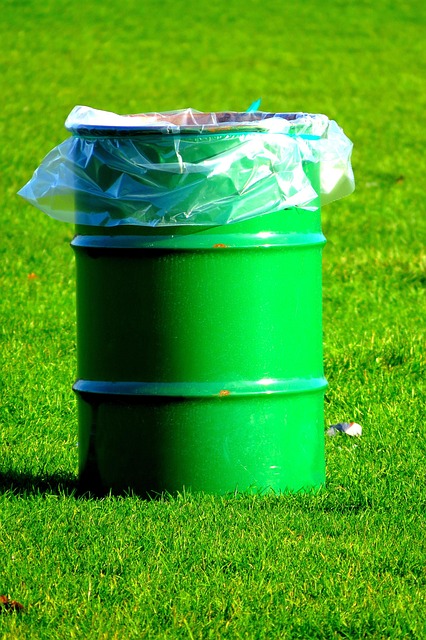Grout cleaning is essential for maintaining kitchen aesthetics and hygiene. Different grout types require specific cleaning approaches, focusing on regular maintenance to prevent dirt, grease, and bacteria build-up. Using suitable tools, products, and techniques ensures optimal results, preventing discolouration, mold growth, and musty odors. A step-by-step guide outlines the process: preparation, cleaning with appropriate cleaners, scrubbing with brushes or toothbrushes, rinsing, and drying. Regular inspections, sealing, and eco-friendly cleaning services are recommended for long-lasting grout cleanliness.
Keeping your kitchen grout clean and sparkling is essential for a fresh, inviting space. This comprehensive guide explores the art of grout cleaning, focusing on kitchen areas. We’ll delve into the science behind grout, its common discoloration issues, and effective cleaning methods. From understanding different grout types to choosing the right tools, you’ll master the process. Additionally, learn preventive measures to avoid future stains and tips for selecting a professional cleaner, ensuring your kitchen’s grout remains pristine.
Understanding Kitchen Grout: Types and Importance of Cleaning

Kitchen grout, often overlooked, plays a crucial role in maintaining the aesthetic and functional integrity of your space. It serves as the adhesive that holds tiles together, forming intricate patterns and defining countertops, backsplashes, and floors. Understanding the different types of grout is essential for effective cleaning. Sanded grout, the most common type, consists of cement, sand, and water, offering a durable yet porous surface that absorbs moisture and stains easily. Non-sanded grout, used for smaller tiles or decorative purposes, has a smoother consistency but is more prone to lye exposure during installation.
Regular grout cleaning is vital for several reasons. Over time, grout collects dirt, grease, and bacteria, leading to unsightly discolouration and unwelcome germs. Proper cleaning not only restores the grout’s natural glow but also prevents the build-up of mould and mildew, ensuring a hygienic cooking environment. Effective grout cleaning involves using the right tools and products while understanding the specific needs of your grout type for long-lasting results.
Causes of Grout Discoloration and Staining

Grout cleaning is an essential aspect of kitchen maintenance, especially addressing the issue of grout discoloration and staining. Over time, grout can lose its initial brilliance due to various factors. One of the primary causes is water intrusion, leading to mold and mildew growth within the tiny crevices. These microorganisms not only affect the aesthetic appeal but also contribute to a musty odor.
Additionally, everyday activities like cooking, cleaning, and spills can leave behind residues that adhere to the grout. Food stains, grease, and mineral deposits from water usage accumulate, causing discoloration and an uninviting appearance. In terms of grout cleaning, understanding these causes is crucial for implementing effective prevention and removal strategies.
Tools and Materials for Effective Grout Cleaning

When it comes to grout cleaning, the right tools and materials make all the difference. Start with a good quality grout cleaner, which can be either an aerosol spray or a paste. These products are designed to penetrate and dissolve tough stains and grime. Always test the cleaner in a small, inconspicuous area first to ensure it doesn’t damage the grout or surrounding tiles.
Don’t forget the importance of protection for yourself and your surfaces. Wear gloves to avoid skin irritation from harsh chemicals, and use a mask if the cleaner has strong fumes. A soft-bristled brush or sponge is ideal for applying the cleaner and scrubbing away dirt. For more stubborn stains, a grout scraping tool can help remove built-up grime. Lastly, don’t forget a clean microfiber cloth to wipe away any residual cleaner and reveal sparkling, fresh grout.
Step-by-Step Guide to Deep Cleaning Kitchens Grout

Deep cleaning your kitchen grout can transform the space, making it look fresh and inviting again. Here’s a step-by-step guide to get the job done effectively. Start by gathering your tools: a broom, a squeegee, a spray bottle filled with water, a grout brush or old toothbrush, and a powerful cleaner designed for grout (a store-bought product or a mixture of baking soda and vinegar).
First, sweep or vacuum the floor to remove any loose dirt. Then, use the mop or sponge with soapy water to dampen the grout. Next, apply your chosen cleaner directly onto the grout lines, making sure it penetrates deeply. Use the grout brush or toothbrush to scrub away any stubborn stains or grime. Rinse thoroughly with a wet squeegee, removing all traces of the cleaning solution. Finally, dry the floor with a clean towel to prevent water spots and allow the grout to shine.
Preventing Future Stains and Maintaining Clean Grout

Regular maintenance is key to preventing future grout stains and keeping your kitchen looking pristine. After cleaning, apply a sealant to protect the grout from moisture and dirt. This simple step can significantly reduce the chances of staining and make future cleaning sessions easier. Consider setting aside a few minutes each week to inspect and clean your grout, removing any spills or residue immediately to avoid long-term damage.
To maintain clean grout, it’s essential to employ effective cleaning methods regularly. Use a mixture of warm water and mild detergent for routine scrubbing, ensuring you reach all angles and crevices. For tougher stains, invest in specialized grout cleaners that contain acid to dissolve mineral deposits and grime. Remember, preventing is always easier than fixing, so stay proactive with your grout cleaning routine.
Tips for Choosing the Right Grout Cleaning Professional

When considering grout cleaning services for your kitchen, it’s vital to choose a professional who understands the intricacies of this task. Look for experts who specialize in grout cleaning and have experience dealing with various types of grout and tile. A good indication is if they offer tailored solutions, as every kitchen is unique.
Check their reputation by reading reviews from previous clients and asking for references. Ensure they use eco-friendly and safe cleaning products, especially in areas where food is prepared. Properly equipped professionals will arrive on time with the right tools, ensuring efficient and effective grout cleaning without causing damage to your kitchen tiles.
